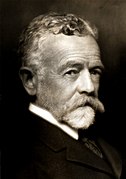United States Senate election in Minnesota, 1922
|
|
|||||||||||||||||||||||||||||||||||||||||||||||||||||||||||
|---|---|---|---|---|---|---|---|---|---|---|---|---|---|---|---|---|---|---|---|---|---|---|---|---|---|---|---|---|---|---|---|---|---|---|---|---|---|---|---|---|---|---|---|---|---|---|---|---|---|---|---|---|---|---|---|---|---|---|---|
|
|||||||||||||||||||||||||||||||||||||||||||||||||||||||||||
|
32 of the 96 seats in the United States Senate (as well as special elections) 49 seats needed for a majority |
|||||||||||||||||||||||||||||||||||||||||||||||||||||||||||
|
|||||||||||||||||||||||||||||||||||||||||||||||||||||||||||

Results including special elections
Democratic gains Democratic holds Republican gains Republican holds Farmer–Labor gains Farmer–Labor holds |
|||||||||||||||||||||||||||||||||||||||||||||||||||||||||||
|
|||||||||||||||||||||||||||||||||||||||||||||||||||||||||||
The United States Senate elections of 1922 and 1923 were elections that occurred in the middle of Republican President Warren G. Harding's term. With the Republicans divided between conservative and progressive factions, the Democrats gained six net seats from the Republicans while the Farmer-Labor party gained one. The Republicans retained their Senate majority.
Republicans gained two seats, defeating defeated incumbent Democrats Gilbert M. Hitchcock (Nebraska) and Atlee Pomerene (Ohio).
Democrats took one open seat in Indiana and defeated seven Republican incumbents:
In Minnesota, the Farmer-Labor Party gained its first U.S. Senator, when Henrik Shipstead defeated incumbent Republican Frank B. Kellogg.
At the beginning of 1922.
In these special elections, the winners were seated during 1922 or before March 4, 1923; ordered by election date.
In these general elections, the winners were elected for the term beginning March 4, 1923; ordered by state.
All of the elections involved the Class 1 seats.
In these special elections, the winners were seated after March 4, 1923.
...
Wikipedia


